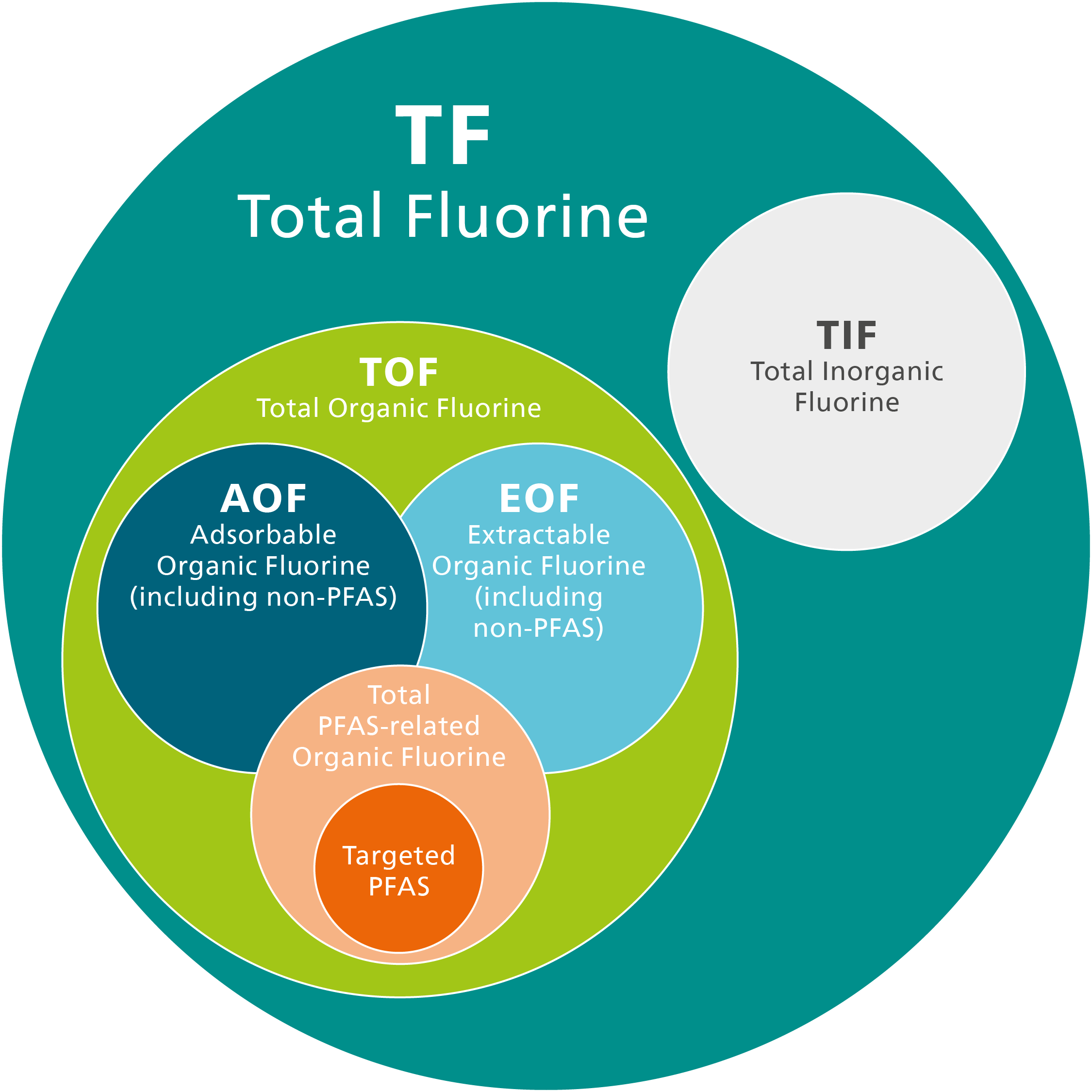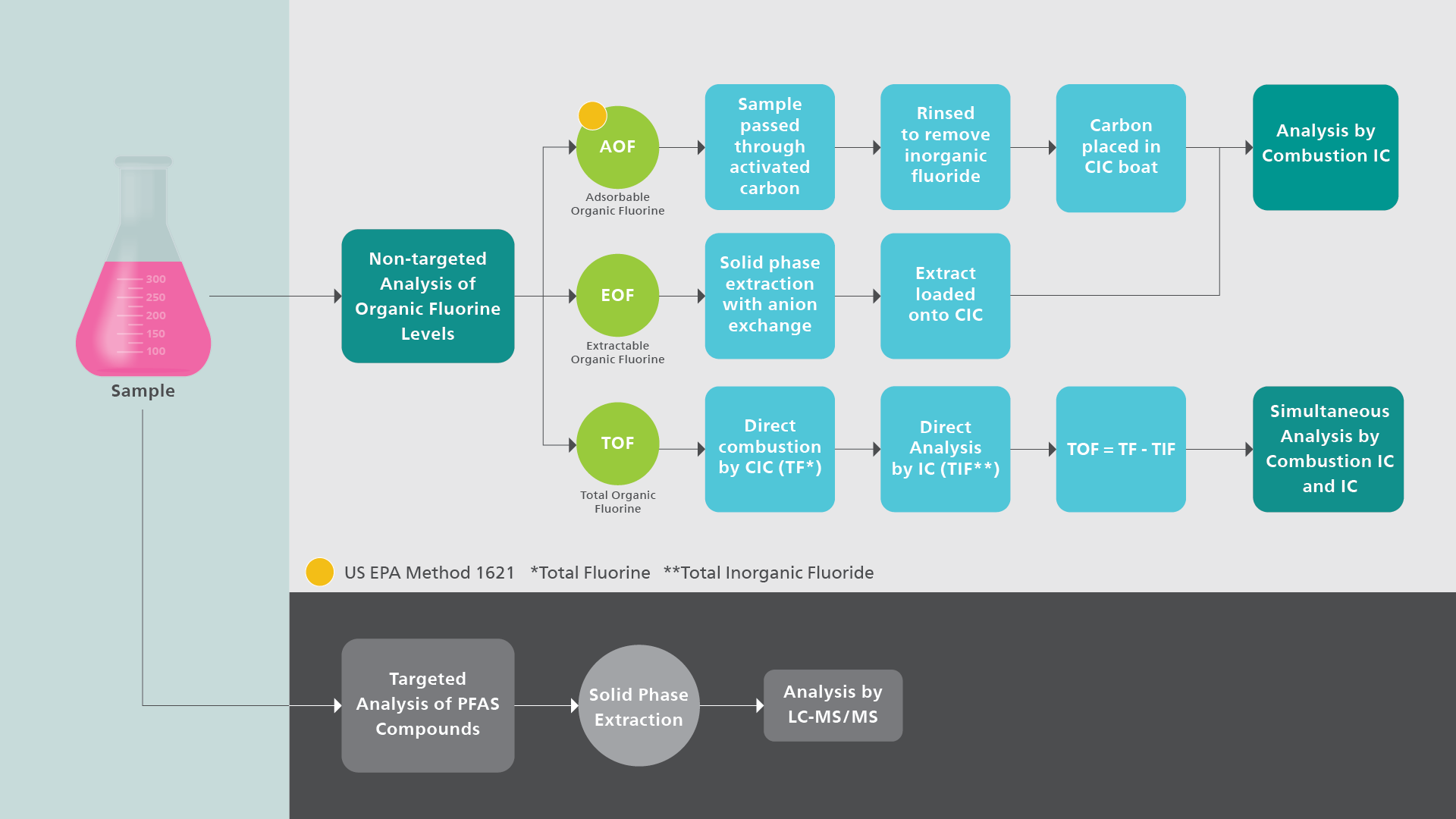Supporting Your Strategies for Fluorine Analysis
What we know about PFAS and organofluorine compounds is growing every day. Like many companies, we have scientists dedicated to understanding the evolving analytical need and to developing next-generation technology to keep pace with what is being discovered.
Much more than PFAS
Fluorine-containing compounds can have an important, positive impact on our society for countless consumer products and technologies. These same compounds, however, present significant challenges when they move into the environment, the water supply and ultimately the very society they were intended to benefit.
Historically, LC-MS/MS has been the approach for evaluating specific PFAS compounds. The National Institute of Environmental Health Sciences (NIEHS) has confirmed the identity of more than 9,000 PFAS compounds and while some of these compounds are known toxins, others remain under an investigation that will take years to complete.
In the short and mid-term, the complete profile of fluorine determined using Combustion Ion Chromatography (CIC) gives us a better overall picture of organic fluorine impact.

Overview of Analytical Approaches
There are various methodologies available for analyzing PFAS and other fluorinated compounds. Non-targeted analysis of organically bound fluorine using Combustion IC continues to gain acceptance as a screening technique to show the full scope of contamination. There are multiple approaches to non-targeted screening for organic fluorine, with AOF currently receiving the most attention. The US EPA has published Method 1621 as a standard for determining adsorbable organic fluorine in aqueous matrices using CIC.







